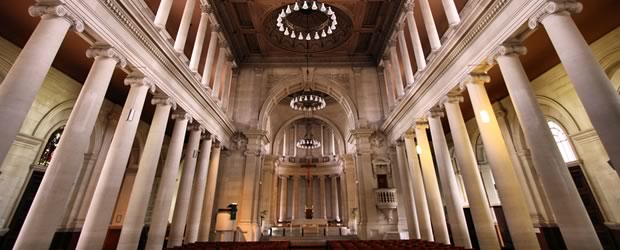Although Christchurch is inching its way back to some level of pre-earthquake activity, the visitor is overwhelmed by the emptiness of the city centre; empty of people and of buildings. On Saturdays at lunchtime when most city streets are heaving with weekend shoppers, not so Christchurch. Many of the damaged buildings have been demolished and the cleared sites leave whole blocks devoid of any structure. Some vacant sites have been turned into temporary carparks but the car spaces far outnumber the people in the city centre.
There are signs of new life. Ballantynes, a major department store did not sustain much structural damage and re-opened quite quickly. Around it are pop-up shops in ships’ containers. Coffee shops are likewise housed in very large ships’ containers dotted around the cleared parts of the city centre. Known as the Garden City, Christchurch is re-greening its centre with large planter boxes filled with grasses, seasonal shrubs and flowers, many donated by other cities and towns.
The brand new, Anglican transitional cathedral opened in mid-August. It is built from reinforced cardboard and designed by the Japanese architect Shigeru Ban.
Across the road on the site of the former Baptist church is a moving memorial to those who died; 185 white chairs in various shapes and sizes represent the 185 people who perished in the quake. The baby bassinets a poignant reminded that disaster strikes all ages.
On the other side of the road stood the Christchurch television building in which most of the 185 victims died. A floor of the building was leased to an English language school, full of young adult students at the time the quake hit. Very few survived. The site has been cleared and simple floral tributes are refreshed frequently.
The Catholic cathedral is still standing but cannot be used; its surviving walls reinforced by ships containers, stacked one on another. Their garish colours of red, blue, and yellow provide a surreal contrast to the sober stone.
We are used to hearing of the brain-drain from various countries but Christchurch is suffering a child-drain as families with school-going children continue to move elsewhere due to the stress of continuing after-shocks and constant disruption to traffic patterns. The parish of Innes Rd, where the sisters live, was not as severely damaged as neighbouring suburbs. Dallington was decimated, loosing its church, school buildings and many homes. The school population has dropped to the extent that Dallington Catholic school, housed now in temporary accommodation, will become part of the Innes Rd, Our Lady of Fatima Catholic school. The newly created school will receive a new name so Our Lady of Fatima school, in which so many of our sisters taught, will be reborn and renamed.
The large convent more recently in use as a pre-seminary centre has been demolished and is open space for the time being. Initial plans for the new school and parish house have been drawn up and so a new creation will emerge on the Innes Rd site.
Our sisters, Cora and Deirdre, continue to serve the people of Innes Rd in many ways but chiefly in the ministry of accompaniment as so many are still affected by the turmoil brought about by the earthquake.


